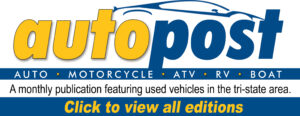For a vehicle that doesn’t make much of a sound when it moves, the BEAST was generating a fair amount of noise Tuesday afternoon.
It came in the form of the media event Monongalia County Schools launched at the district bus garage. Officials announced the six-week pilot run of the above-nicknamed electric ride that hits the road today in the district.
The BEAST – or, “battery electric alternative school transportation” – is on loan from GreenPower Motor Co., a recent addition to the Mountain State business landscape that will soon begin manufacturing the vehicles at its new plant in Charleston.
In the meantime, the high-amp bus, christened “Monongalia County Schools E1,” is already getting a workout on country roads, having just completed similar testing in Kanawha, Cabell and Mercer counties.
Tony Harris, who is the transportation director for Mon’s school district, gave the silent-running bus a test of his own Tuesday, steering onto nearby Chaplin Road and other thoroughfares near the bus garage facilities at Mylan Park.
Harris, who logged 20 years as a school bus driver in neighboring Preston County, admitted he was dubious at first.
Then, he actually drove it.
“I was impressed. The handling, the operation. It surprised me.”
He’ll be at the wheel when it makes its official maiden voyage in Mon this morning.
That will be at 6:15 a.m., on county route 857 and other roads along the rural reaches, the driver-turned-administrator said. He’s piloting the bus himself for today’s school runs, to and from.
Then it’s on to town driving, with all the traffic lights and occasional gridlock that goes with four wheels in the University City.
The local district has the bus through Dec. 23, Harris said – plenty of time, he added, grinning, to give it the full width and breadth of the north-central West Virginia driving experience.
“We just want to see what it can do,” he said.
What it’s done so far, GreenPower’s Mark Nestlen said, is what company engineers expected it do: That is, to average anywhere from 100 to 150 miles per charge.
That means healthy efficiency and healthy passengers, given the zero-emission cruising, the development officer said.
“And that’s even before the 70% to 80% savings that we’re gonna see in the operating costs,” he said.
The health claims are backed up a University of Michigan study from 2015 which also tells school officials what they already knew: that diesel-fueled buses don’t give a very nice ride to kids with asthma.
It’s because of what pours from the exhaust pipe.
That means kids missing school, and their parents missing work to tend to them.
In the short-term, though, Nestlen said, there’s also the fun-factor of motoring, and testing vehicles in Appalachia.
Which, he said, even has its own geographic, steering wheel mantra.
“They say if we can drive ‘em in West Virginia, we can drive ‘em anywhere.”
TWEET @DominionPostWV



